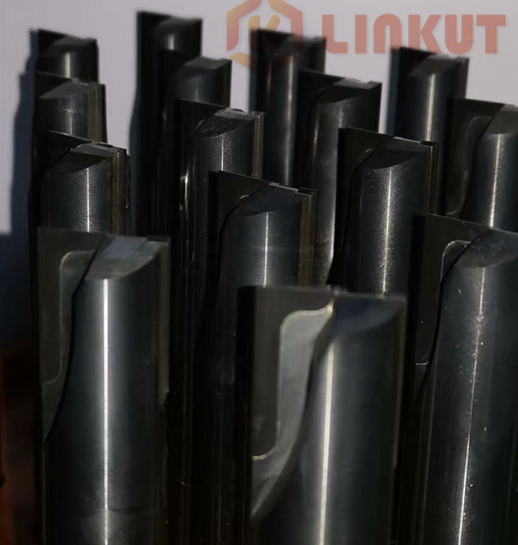Causes of Diamond Face Milling Cutter Wear
Diamond face milling cutter is one of the classification of diamond tools, which is widely used in metal cutting.
PCD tool itself has good performance indicators, so PCD milling tool has rapid heat transfer, can significantly reduce cutting force, small thermal deformation, high
machining accuracy, and it is not easy for chips to bond on the tool tip to form mechanical tumors in the machining process. Nevertheless, as a tool, PCD tool will be
worn, which can be divided into:
1) Abrasive wear
There are often some micro particles with high hardness in the processed materials, which can draw grooves on the tool surface, which is abrasive wear. Abrasive wear
exists on all surfaces, especially on the rake face. Moreover, abrasive wear will occur at various cutting speeds, but for low-speed cutting, due to the low cutting temperature,
the wear caused by other reasons is not obvious, so abrasive wear is the main reason.
2) Cold welding wear
During cutting, there is great pressure and strong friction between the workpiece, cutting and front and rear tool surfaces, so cold welding will occur. Due to the relative
movement between the friction pairs, the cold welding will crack and be taken away by one party, resulting in cold welding wear. Cold welding wear is generally serious at medium
cutting speed.Experiments show that brittle metals have better cold welding resistance than plastic metals; Multiphase metal is smaller than unidirectional metal; The tendency of
metal compound to cold welding is smaller than that of simple substance; The cold welding tendency between group B elements and iron in the periodic table of chemical elements
is small. Cold welding is more serious when cutting high speed steel and cemented carbide at low speed.
3) Diffusion wear
In the process of cutting at high temperature and the contact between workpiece and tool, the chemical elements of both sides diffuse each other in the solid state, change the
component structure of the tool, make the surface of the tool fragile and aggravate the wear of the tool. Diffusion always keeps the object with high depth gradient spreading to the
object with low depth gradient.
4) Oxidation wear
When the temperature rises, the tool surface oxidizes to produce soft oxides. The wear formed by chip friction is called oxidative wear. For example, oxygen in gas reacts with cobalt,
carbide and titanium carbide in cemented carbide at 700 ℃ ~ 800 ℃ to form soft oxide; At 1000 ℃, PCBN reacts with water vapor.
Previous Article:The Application of Diamond PCD Saw Blade
Next Article: CBN Ball End Milling Cutter for Milling High Hardness Steel Die







